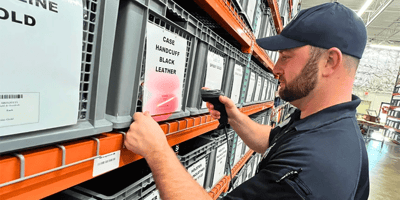Blog
The Cost of Missing Gear: Why Law Enforcement Inventory Control Can’t Be an Afterthought
When a law enforcement agency can’t account for its equipment, the cost isn’t just financial—it’s operational, legal, and even personal. Whether it’s a missing radio during a tactical response, expired body armor, or untracked controlled equipment, poor inventory control compromises more than logistics—it compromises safety and trust.
A digital quartermaster system gives agencies the tools to reduce risk, maintain accountability, and ensure that critical equipment is always ready and accounted for.
Real-World Consequences of Missing or Mismanaged Gear
Consider these common but high-risk scenarios:
- A deputy or officer arrives at a call without a functioning body cam. The footage needed to defend them or prosecute the case is never recorded.
- A ballistic vest is found to have expired after an incident occurred. Not only is the individual placed at risk, but liability shifts back to the agency for failing to maintain compliant gear.
- A set of keys or access cards goes missing. Entire facilities—such as a detention center or evidence room—may need to be re-secured, draining both time and budget.
- A taser or firearm is unaccounted for during an audit. This can trigger an internal investigation—or worse, a public scandal.
These aren’t rare exceptions. They’re the predictable outcomes of manual tracking systems that can't keep up.
Why Spreadsheets and Binders Don’t Cut It
Too many agencies—including both police departments and sheriff’s offices—still rely on outdated tools to manage complex inventories. Spreadsheets grow out of control. Binders go missing. Updates are delayed. Worse, responsibility is often scattered across personnel or divisions, with no clear audit trail.
The result? Gaps in data. Gaps in accountability. Gaps in readiness.
How Digital Inventory Control Helps Law Enforcement Minimize Risk
Digital inventory control solutions, by contrast, offer real-time visibility, automated alerts, and secure logging of gear assignments and maintenance records—ensuring the right equipment is always where it needs to be, when it matters most.
For law enforcement agencies, this means:
- Improved readiness for daily operations and emergency response
- Reduced risk of missing gear incidents
- Clear audit trails for compliance and legal defense
- Better protection of agency reputation and public trust
Readiness, Public Trust, and the Next Audit
Inventory control is more than logistics—it’s part of the public trust. The ability to account for every asset is not just good policy; it’s often a legal and regulatory requirement. Poor asset tracking can lead to failed audits, legal exposure, and erosion of public confidence.
Related: Audits, Liability, and Accountability: The Silent Burdens on Law Enforcement Logistics
Conversely, agencies that proactively manage their gear—whether for patrol, detention, investigations, or court services—demonstrate professionalism, readiness, and respect for taxpayer investment.
Accountability Shouldn’t Be an Afterthought
When it comes to gear, the cost of getting it wrong doesn’t just show up on a budget sheet—it shows up in investigations, courtroom scrutiny, and news headlines. Whether your agency is facing a routine inspection or a crisis-driven inquiry, digital inventory control can be the difference between defensible practices and preventable failures.
Don’t Wait for the Next Audit.
Request a demo of Omnigo’s Digital Quartermaster Software or download our Audit-Readiness Checklist to stay ahead of risk and safeguard public trust.
More from the blog
View All Posts
Audits, Liability, and Accountability: The Silent Burdens on Law Enforcement Logistics
Read More
How to Stay Compliant with Federal Grant Requirements Using a Digital Quartermaster System
Read More
Meet CFA Accreditation Standards with Confidence: How a Digital Quartermaster System Supports Equipment Accountability
Read MoreSubscribe to email updates
Stay up-to-date on what's happening at this blog and get additional content about the benefits of subscribing.

